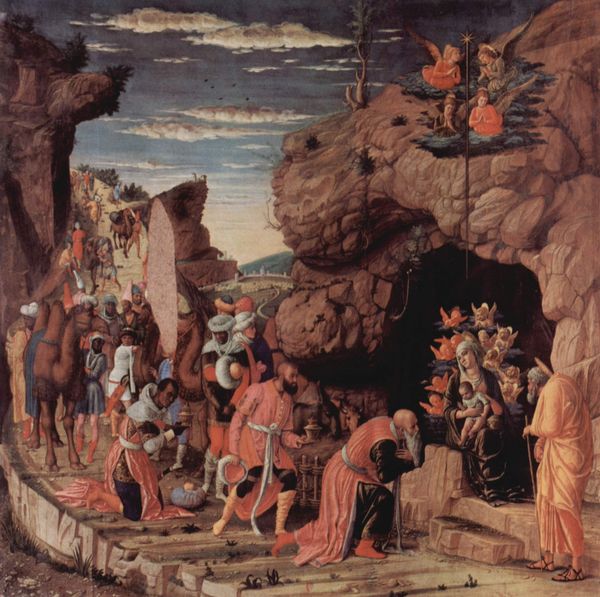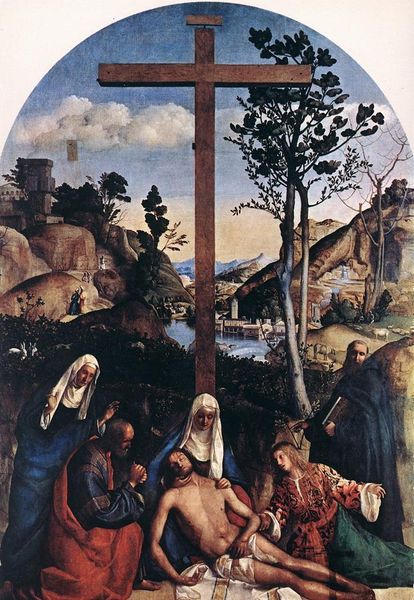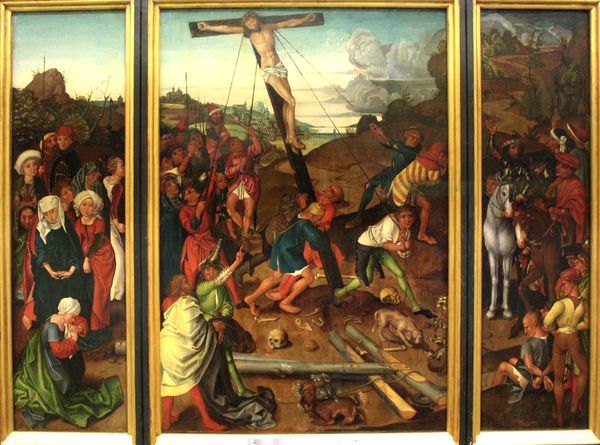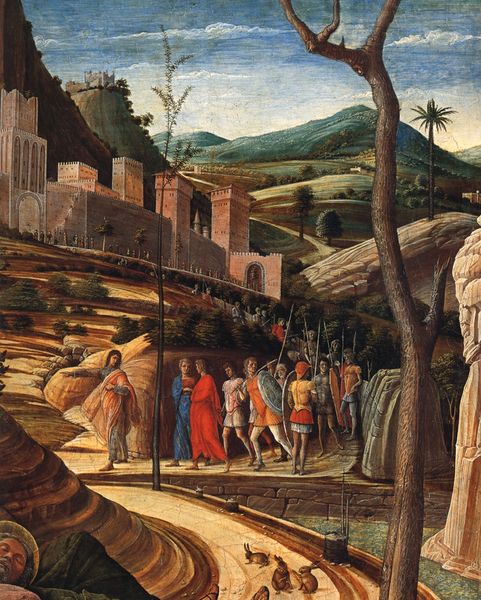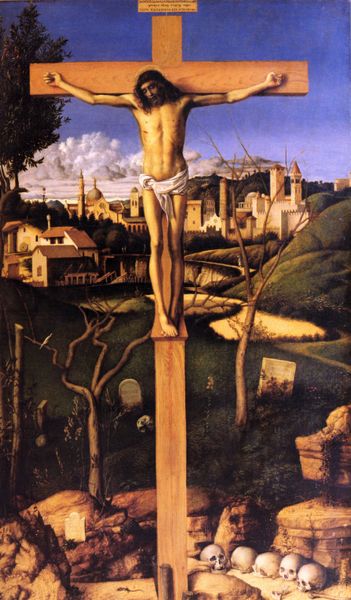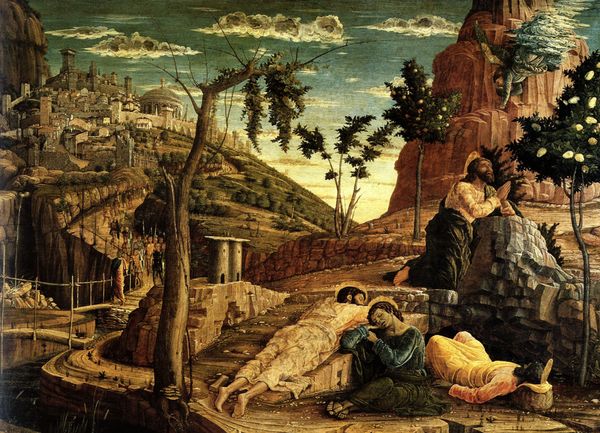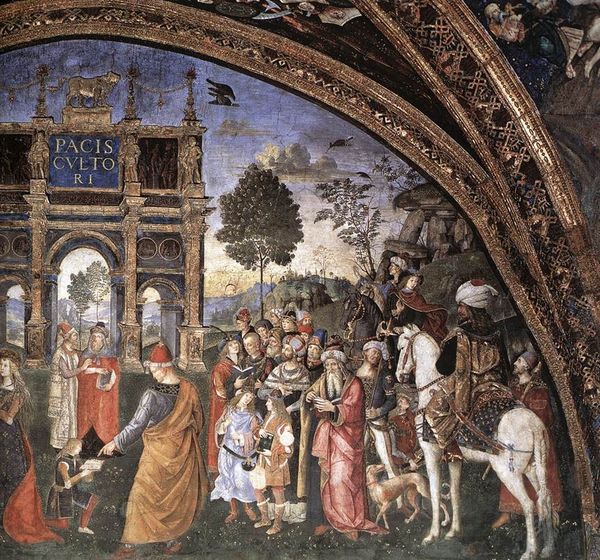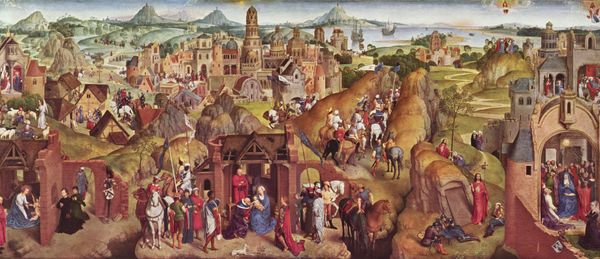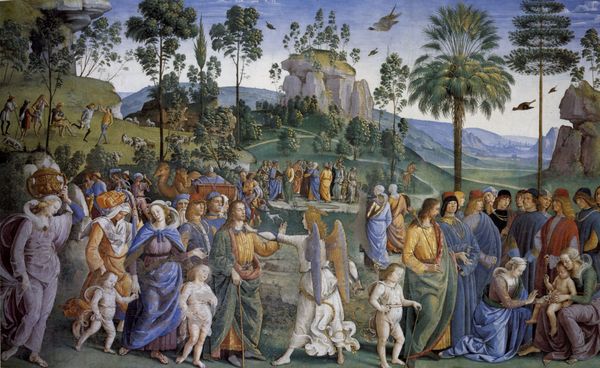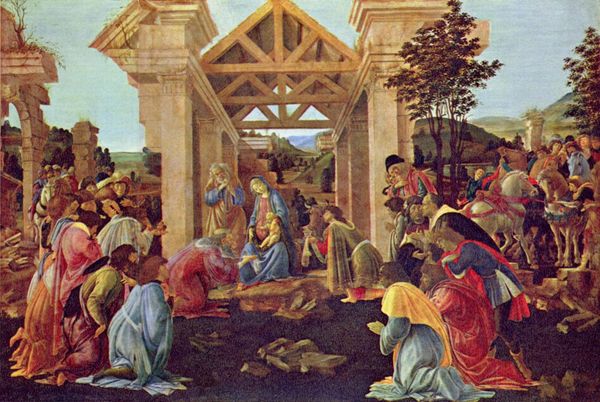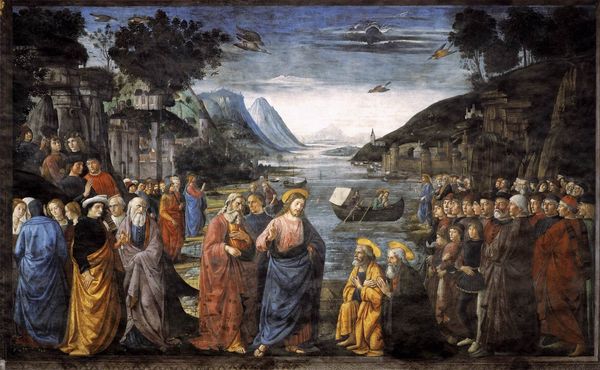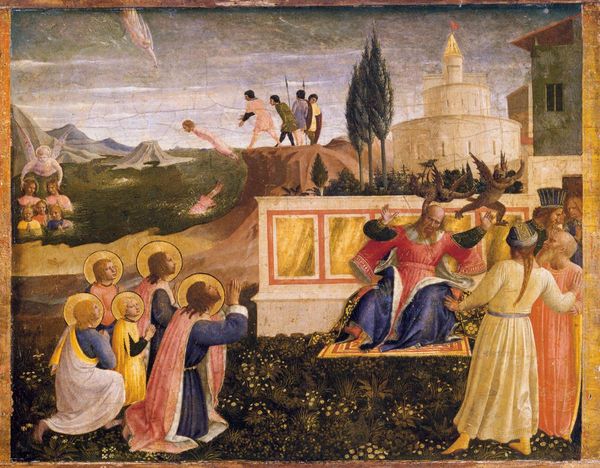
Calvary, central predella panel from the St. Zeno of Verona altarpiece 1459
0:00
0:00
painting, oil-paint
#
portrait
#
high-renaissance
#
painting
#
oil-paint
#
landscape
#
holy-places
#
figuration
#
oil painting
#
jesus-christ
#
christianity
#
crucifixion
#
history-painting
#
italian-renaissance
#
christ
Dimensions: 96 x 76 cm
Copyright: Public domain
Curator: Andrea Mantegna's "Calvary," painted circa 1459, originally a central predella panel for the St. Zeno altarpiece, now resides here in the Louvre. An oil painting, it commands our attention not only with its somber theme but with its sophisticated arrangement of forms. Editor: Oof. Viscerally upsetting, isn't it? It hits you right in the gut, with all that raw emotion and brutal landscape, making the scene even more desolate. It’s as if Mantegna's inviting us to grapple with some fundamental existential despair. Curator: The painting indeed operates on multiple levels, Editor. Mantegna utilizes a pyramidal composition that directs our gaze upwards, from the skull at the base to Christ on the central cross, thereby structuring our emotional and theological reading. This is more than mere reportage. Editor: Exactly! But look at those muted colours. Bleak, almost bleached, like the colour has drained right out along with the lifeblood. That combined with the sharp, almost clinical rendering of the figures... well, there’s an unnerving distance that really heightens the horror. He is isolating us in a really particular moment, you know? Curator: Note how the incised lines lend a certain sharpness, even austerity, to the forms. Semiotically, consider how Mantegna employs classical architecture as a backdrop—almost ironic—given the drama of this particular Christian event unfolding. A visual tension emerges. Editor: A tension? A symphony of anguish is more like it. Though yes, intellectually I appreciate your semiotic angle! But there’s also something incredibly human about it, paradoxically. Those mourners on the left—clutching each other, overcome by grief—they mirror our own vulnerabilities in the face of immense suffering. I feel I recognise them. Curator: Perhaps precisely there lies Mantegna's genius. His skill in constructing a compositionally sound and historically informed narrative resonates through time, Editor. Editor: Leaving us utterly gutted, might I add. In this bleak reminder, there is some sort of perverse beauty—and that paradox sticks with you, like the cross itself.
Comments
No comments
Be the first to comment and join the conversation on the ultimate creative platform.
